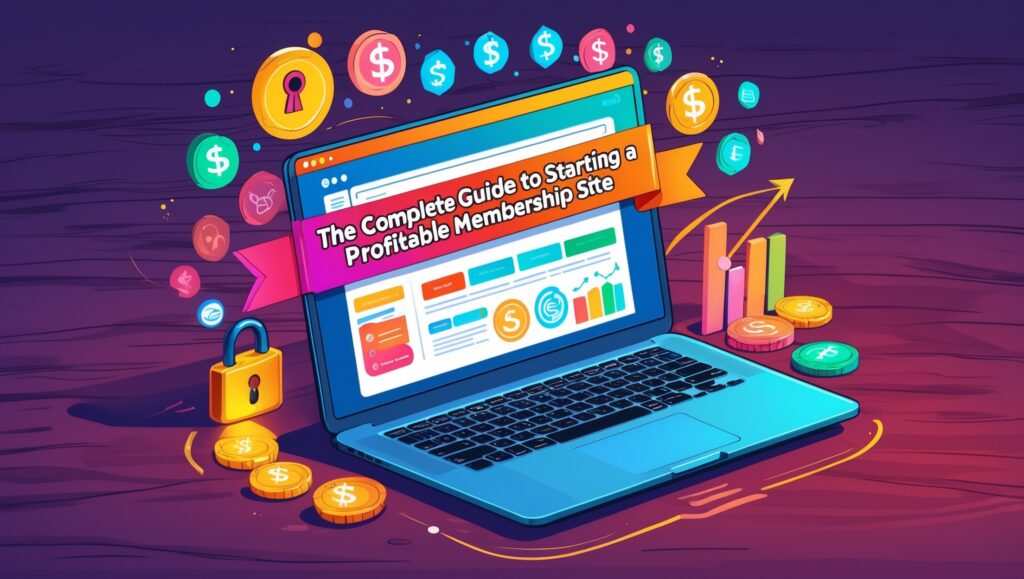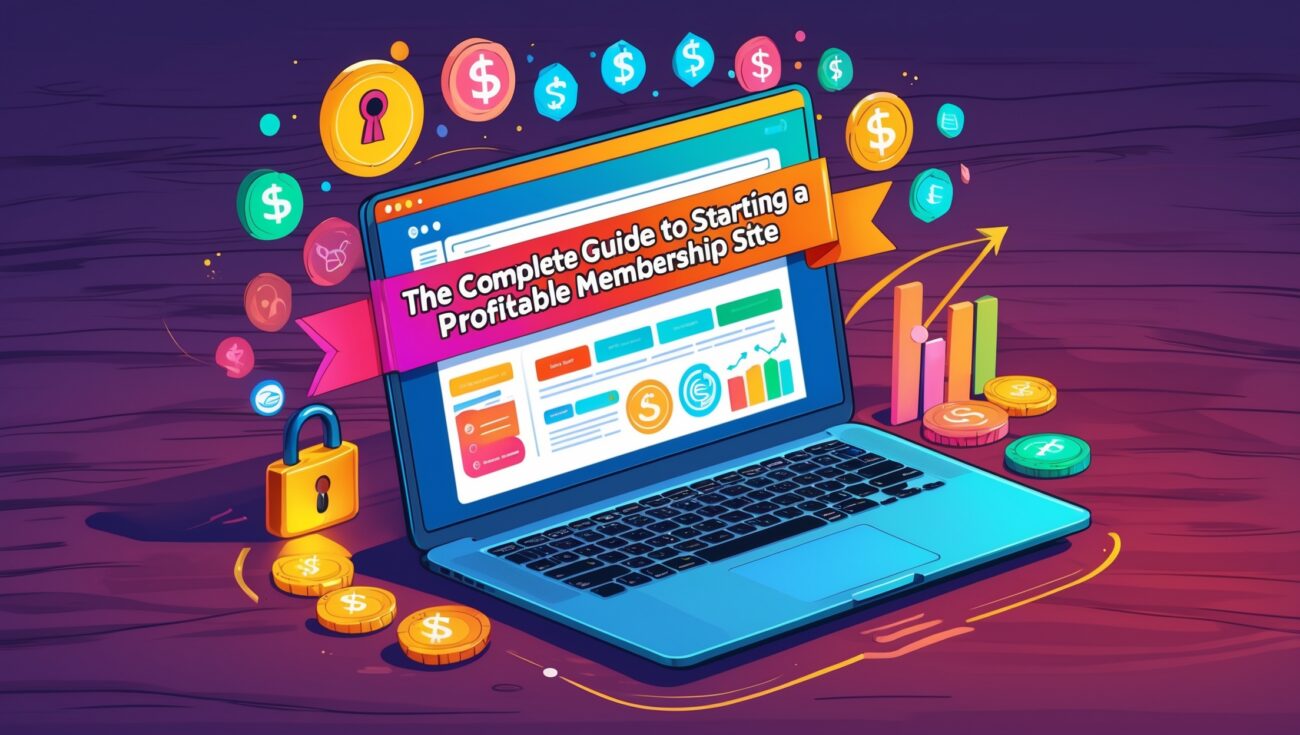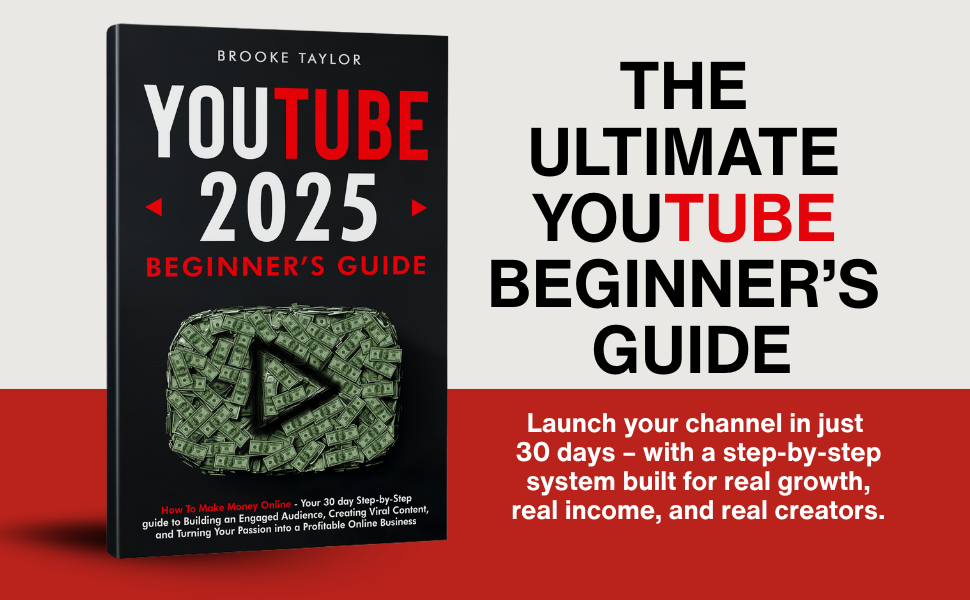The Complete Guide to Starting a Profitable Membership Site
Why I Decided to Start a Membership Site
When I first thought about starting a membership site, I honestly felt overwhelmed. There were so many moving parts—payment processing, course hosting, community platforms, content delivery, and keeping members engaged. At one point, I even questioned if it was worth it.
But here’s the truth: membership sites are one of the most profitable and sustainable online business models out there. Unlike one-time courses or digital products, a membership site gives you recurring monthly income while building a loyal community around your expertise.
The key is choosing the right tools and setting it up the right way. That’s why I use Skool—it combines a classroom, community, and calendar into one simple platform, making it easy for me to monetize my knowledge without tech headaches.
In this complete guide, I’ll walk you through everything I’ve learned about building a profitable membership site from scratch—from choosing your niche to scaling your income.

Table of Contents
Why Membership Sites Are So Profitable
Before we dive into the how, let’s cover the why. Membership sites are powerful because they give you:
- Recurring Revenue – Instead of chasing new sales every month, you get steady income from subscriptions.
- Community Power – People don’t just pay for content; they pay to connect with like-minded individuals.
- Scalability – Once your content and systems are set up, adding new members requires little extra effort.
- Authority – Running a membership builds your credibility and positions you as an expert.
For me, the moment I realized this wasn’t just about money—but about creating a space where people could learn, grow, and connect—that’s when my business transformed.
Step 1: Choosing Your Niche
The first mistake I made was being too broad. A profitable membership site thrives when it serves a specific niche.
Ask yourself:
- What do people already ask me for advice on?
- What skill or knowledge have I mastered that others struggle with?
- Where is there demand, but not enough supply?
Some popular niches include:
- Fitness & health (meal plans, workouts, challenges).
- Business & entrepreneurship (marketing, investing, freelancing).
- Personal development (mindset, productivity, habits).
- Creative skills (photography, design, writing).
Tip: Don’t aim for “everyone.” Aim for a specific group of people with a specific problem.
Step 2: Crafting Your Membership Offer
Your offer is what convinces people to join and stay. A profitable membership usually includes:
- Core training or digital products (courses, templates, guides).
- Exclusive community access (peer support + accountability).
- Live coaching calls or workshops (added value and interaction).
- Ongoing updates (fresh content keeps members subscribed).
When I created my first membership, I thought people wanted tons of content. But in reality, what they wanted was clarity and community. Keep your offer simple and results-focused.
Step 3: Choosing the Right Platform
This is where I hit my biggest roadblock. I tried using Facebook groups, Kajabi, and Discord. Each one worked halfway but left me frustrated.
- Facebook groups were too noisy and distracting.
- Kajabi was powerful but overly complex and expensive.
- Discord felt unprofessional for coaching and courses.
Finally, I found Skool.
With Skool, I got everything in one place:
- A community hub (no distractions, no ads).
- A classroom to host my training.
- A calendar to schedule calls.
- Gamification so members stay engaged.
The simplicity was a game-changer. Instead of juggling five tools, I just log into Skool and run my entire membership from there.
Step 4: Structuring Your Content
Your content doesn’t need to be overwhelming. In fact, less is often more. Here’s how I structure mine:
- Onboarding – A simple welcome video and guide to help new members get started fast.
- Core modules – The step-by-step system or knowledge they came for.
- Weekly or monthly updates – Fresh lessons, case studies, or templates.
- Community challenges – Fun, interactive tasks that keep members active.
The goal is transformation, not information. Members don’t join to watch endless videos—they join to get results.
Step 5: Pricing Your Membership
One of the toughest decisions is deciding how much to charge. Here’s what I learned:
- Low-ticket ($10–$50/month) works well for broad niches with large audiences.
- Mid-ticket ($50–$200/month) works best for coaching, professional skills, or masterminds.
- High-ticket ($200+/month) works when you offer direct access, accountability, and high-value transformations.
I started with mid-ticket pricing because it attracted serious members who were willing to invest in themselves.
With Skool, you can set up payments easily and start earning right away: Sign up for Skool here.
Step 6: Launching Your Membership Site
Here’s how I launched my first profitable membership:
- Pre-launch list – I built excitement by sharing free content on social media and email.
- Founding members offer – I gave early joiners a discount and asked for testimonials.
- Official launch – I promoted heavily for 1–2 weeks, then closed enrollment temporarily.
- Evergreen model – After the first 50 members, I kept the doors open year-round.
Don’t wait for perfection. Launch with what you have. You can always refine later.
Step 7: Marketing Your Membership Site
A great membership site won’t grow if no one knows about it. Here are strategies that worked for me:
- SEO blogging – Just like this post, I write content around keywords people search (membership platforms, digital products, online communities).
- YouTube – Video builds trust fast. I share tutorials, then link to my membership.
- Email marketing – Nurture subscribers with free value and invite them to join.
- Social proof – Share testimonials and member wins.
- Free trials or challenges – Let people experience the value before paying.
Consistency beats perfection. Show up, share value, and always remind people where they can join you.
Step 8: Keeping Members Engaged
Retention is the difference between a profitable membership and a failing one. To keep people subscribed, I focus on:
- Regular content drops – New lessons or resources every month.
- Community interaction – Answering questions, encouraging posts.
- Live calls – Q&A sessions, hot seats, or coaching workshops.
- Recognition – Celebrating wins, leveling up members with Skool’s gamification.
- Surprise bonuses – Adding unexpected value that makes members want to stay.
Engagement = retention = recurring income.
Step 9: Scaling to Profitability
Once you validate your membership with the first 20–50 members, it’s time to scale:
- Raise your prices – As demand grows, so should your rates.
- Add affiliate marketing – Reward members for bringing in new signups.
- Invest in ads – Once you have proof of profitability, paid ads can accelerate growth.
- Build partnerships – Collaborate with other creators and communities.
- Expand your offer – Add new courses, resources, or masterminds inside.
I started small, but once I reached consistent recurring revenue, scaling felt natural.
Why Skool Makes Membership Sites Profitable
After testing other platforms, here’s why I believe Skool is the best option for most people starting a membership site:
- Simplicity – No tech overwhelm, no endless integrations.
- Community focus – People stay engaged because of gamification and connection.
- All-in-one – Courses, coaching, and community under one roof.
- Affordability – $99/month is cheaper than cobbling together 5 different apps.
Most importantly, my members love it. A platform that feels easy for both me and them is priceless.
Try it yourself: Get started with Skool here.
FAQs About Membership Sites
1. How long does it take to build a profitable membership site?
It depends, but with the right niche and strategy, you can start earning within 30–60 days.
2. Do I need a large audience?
Not necessarily. A small, engaged group of 50–100 members can already make you profitable.
3. Should I offer a free or paid community first?
I recommend starting paid. Free communities often drain energy without revenue.
4. Can I switch to Skool later if I start elsewhere?
Yes. Many creators migrate their memberships to Skool after outgrowing other platforms.
Conclusion: Your Profitable Membership Site Starts Now
Building a membership site is one of the smartest moves I’ve made. It gave me predictable income, a thriving community, and a business that grows month after month.
The hardest part is getting started—but once you do, the momentum builds.
If you’re serious about creating a profitable membership site, I recommend starting with Skool. It’s the simplest, most effective platform I’ve found.
Sign up for Skool here and start turning your knowledge into recurring income today.






